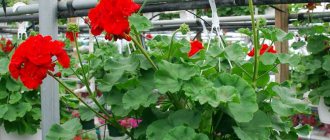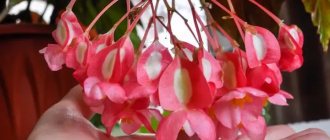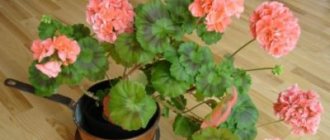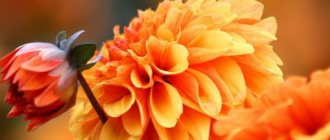Is it possible to sow Gatsania in open ground?
Gatsania
is a rather unpretentious plant, so it
can be
grown in
open ground
, on the balcony and in home pots. The only condition for this is maximum access to sunlight, moderate watering, and absence of drafts.
Interesting materials:
Which image format is better in quality? What image format does not lose quality? What is the book format for ebooks? Which format is better avi or mp4? Which format is best for a car radio? What format is needed for Photoshop? What format is needed for IGTV? What format is needed to burn a movie to DVD? What format does Samsung support? What format is Stories?
Preparing the plant for winter
Preparatory work for wintering is carried out in the fall, in October-November, when the air temperature drops to -5-7 degrees. Strong shoots are taken from gatsaniya and transplanted into flower pots. Then simply place it in a warm place.
For better wintering, the flower must be transferred gradually so that it has time to adapt to changing conditions. To do this, the pot is brought into the house at night for 3-4 days, and exposed to fresh air during the day. Thus, gatsaniya will comfortably overwinter.
See also
How to plant, grow and care for hyacinth at home in a potRead
When replanting a plant from open ground, you should follow some recommendations:
- Drainage preparation. Gatsaniya is sensitive to excess moisture, so it is recommended to use expanded clay as drainage.
- Land preparation. The most suitable soil is sandy loam containing a large amount of humus.
- Taking care of the roots. The root system is extremely sensitive and does not tolerate any damage, even death.
Like any plant, gatsaniya loves to be treated with care and care, although it is considered an unpretentious flower.
Winter care for gatsaniya
Africa has a hot climate throughout the year. Over vast areas of the continent, winter temperatures range from +8°C to +20°C. Even at the lowest possible position, the sun heats no less than on the longest daylight hours in central Russia or Siberia.
When to start preparing a flower for winter
Gatsania was brought to the European part of the continent in the middle of the 18th century and was grown as a greenhouse plant. Over time, gardeners figured out how and where to preserve the plant in the winter.
If these are annual plantings, then there are no issues with wintering. Flowers are sown by seeds, go through all stages of development during the summer season and die out by winter. In the garden, gatsaniya blooms from the end of June until frost.
When there is a goal to preserve the bush until next spring, the plant is provided with proper storage, cultivation and care in the winter. This requires conditions:
- Temperature +10°C or more.
- Good lighting.
- Moderate watering.
How to care?
The first thing you need to do after transplanting is to decide on the wintering location of the flower. Most gardeners prefer to store gatsaniya on the balcony, but if the conditions are unsuitable, they bring it into the apartment. It is important to provide the plant with a large amount of sunlight, so it is recommended to place it on a windowsill with a sunny side. Artificial lighting is also added, since the optimal time to receive light is at least 8 hours a day.
An important aspect of gatsaniya care is maintaining optimal temperature. The flower loves temperatures from 20 degrees, but tolerates frosts down to -5, so a comfortable temperature for wintering is considered to be 8-11 degrees. Temperatures below threaten disease or death of the plant.
Water as needed (every couple of days). Excessive watering or drought will have a bad effect on the flower.
general information
People very romantically called gatsaniya “midday gold,” and all because the flower opens most beautifully in the midday sun. This is a low plant, rarely more than 30 cm, with beautiful dark leaves and a short stem. On the reverse side, the leaf plates are slightly fleecy to protect against pests, frost and to retain moisture.
Despite their overall miniature size, gatsania flowers are quite large, blooming up to 10 cm. They look like baskets collected from smaller inflorescences. The most common colors are yellow, orange and red. One small plant can produce more than 30 buds.
Gatsania blooms around mid-summer, but some late varieties bloom in August. At the same time, she will decorate the garden with her colorful buds almost until the end of autumn.
Review of the best varieties with photos
There are several varieties of gazania. One of the most popular is gazania rigens (shiny, glossy). Also known:
- Gazania uniflora is single-flowered.
- Gazania krebsiana - characterized by red-brown flowers, up to 15 cm in height and 20 cm in width. The dark green leaves are shiny at the top and velvety underneath. Known in Africa as perennial gazania.
- Gazania longiscapa (gazania linearis) - found mainly in Africa, in the warm states of the USA (New Mexico, California).
Gatsania varieties are divided into groups:
- "Kiss" Kiss.
- "Gazoo" Gazoo.
- "New Day" New Day and "Daybreak" Daybreak.
- "Talent" Talent.
- "Mini Star" Mini-Star.
"Kiss"
These are early flowering varieties with flowers appearing in June. Plants maintain a compact shape. Recommended for growing in containers. This is the richest group of varieties, among which the following are popular:
- “Frosty” Frosty – with a white coating on the leaves.
- “White Flame” White Flame - the sides of the petals are colored in contrast with a stripe that divides them in the middle.
- "Bronze Star" Bronze Star - brown petals with a yellow tip and a green ring around the golden center.
- "Lemon" Lemon Shades - lemon yellow flowers with shaded petals.
- “Mahogany” Mahogany – hybrid gatsaniya harsh, mahogany flowers.
"Gaza"
The group of varieties is characterized by abundant flowering throughout the summer. Petals of pure flowers. The main advantage is that the flowers remain open even in cloudy weather.
- “Pure Orange”, “Clear Orange” Clear Orange – orange flowers.
- "Pure Vanilla" or "Clear Vanilla" Clear Vanilla - creamy white flowers.
- “Clear Yellow”, “Clear Yellow” Clear Yellow - yellow flowers.
New Day and Dawn
The flowers of these varieties are larger than those of others (diameter - 10-12 centimeters), placed on short stems, and retain the intense color of the petals even when grown in weak sunlight. The buds open early in the morning and remain open until sunset.
- "Rose Stripe" Rose Stripe - petals with a dark pink stripe on a white background.
- "Red Shades" Red Shades - dark red flowers.
- "Pink Shades" Pink Shades - pink petals with lighter tips.
"Talent"
Varieties with decorative leaves and flowers that close at night. The leaves have an interesting gray color that is attractive even when the buds are closed.
- "Rose Shades" Rose Shades is a hybrid gatsaniya with pink flowers.
- "Red Shades" Red Shades - inflorescences in a shade of rust.
- "White" White - white flowers with a yellow center.
"Mini-Star"
Ministar are dwarf gazania varieties that grow to a height of 15-20 centimeters, forming regular spherical tufts. Especially recommended for growing in pots. The flowers are small (6-7 cm in diameter), found in warm shades:
- yellow;
- orange;
- brown;
- pink;
- white.
Variety "Mandarin" Tangerine - petals and center of a uniform orange hue.
Conclusion
Gazania is a heat-loving, drought-resistant flower with a warm color, reminiscent of a bright daisy or gerbera. Caring for the plant is not too difficult, and the petals and shoots are so beautiful that it would be a mistake to refuse a charming element in the garden. African chamomile will make the garden beautiful, bright, and a little exotic.
Gatsania opens its flowers only when there is sufficient light, so it has not gained popularity in some regions. At the moment, varieties have appeared that are less sensitive to lack of light. This is especially true for varietal groups with the names Daybeek, Kiss, Gazoo. The flowers of the last group are open, even despite the cloudy weather.
Varieties of flowers and their characteristics
There are single flowered, white, shiny, pinnate, peacock and other species, gatsaniya. Endowed with African roots, the flower has a complex character. For example, if the weather is cloudy outside, gatsania flowers close their petals, hiding the middle of the bud. Wonderful flowers are accustomed to light and warmth. And they used to bloom all day long. But in bad weather they close. Flower growers had to work hard to figure out how gatsaniya reacts to the weather. Thus, we got a hybrid - Talent, which, despite the weather conditions, pleases with its color.
It must be said that African daisies love watering. In hot weather it is better to arrange it systematically. If you ignore them, the flowers will begin to shrink on hot days and become less beautiful and bright.
Let's talk about hybrid and long-range guns
Floriculture in our latitudes mainly uses hybrid and long-shooting gazania. The Longshot Gatsania is native to South Africa. This type of gatsaniya is a perennial. Grows with short and creeping stems. It blooms from August until the beginning of winter. These flowers are seven centimeters in diameter.
Hybrid gazania has a harsh structure, and the diameter of the flower is 8 cm. It can be specified in any shade of orange, as well as white and yellow. Grows as a bush in a rosette of basal leaves.
The hybrid flower differs in the decor of its leaves. They have a linear spatulate structure. The leaves are tinged with silver underneath and feel like velvet. By the way, such pubescence is not accidental. Thanks to him, the plant is not afraid of the cold. In addition, the leaves help retain moisture on the flower.
Hybrid varieties are more in demand among our compatriots. The fact is that they have adapted perfectly to our climate. They have large flowers and a large number of semi-double or double petals. And many hybrids and main varieties have been bred. And they bloom in white, crimson, pink, yellow, bronze-lemon, cream, orange, striped and spotted flowers.
Their names suit the color. For example, there are the following names of varieties (varietal mixtures): Sunny Blik, Sunny Dance, Divnoye Diva, Sunshine, Sunshine, Big Kiss, Bonjour, etc.











